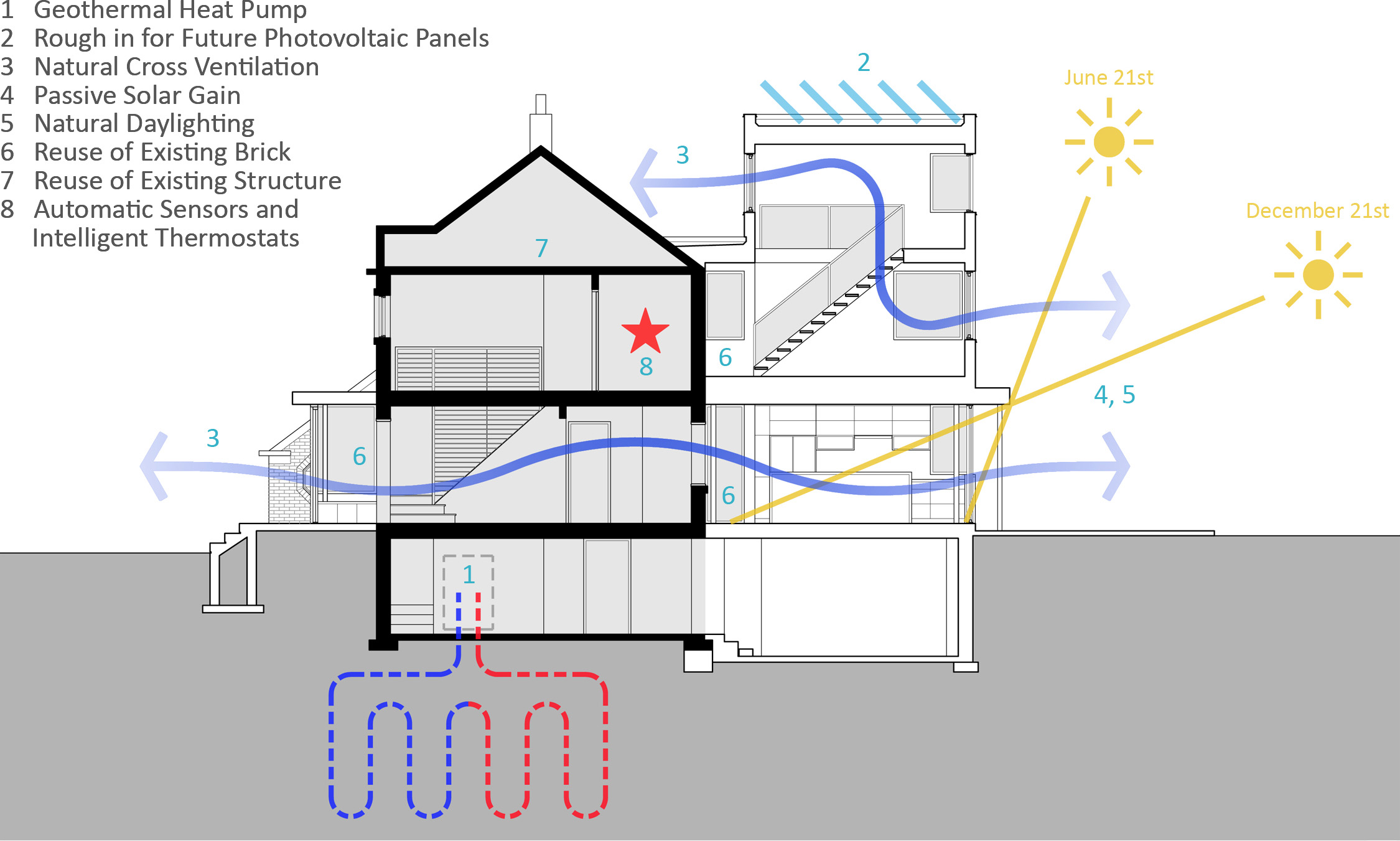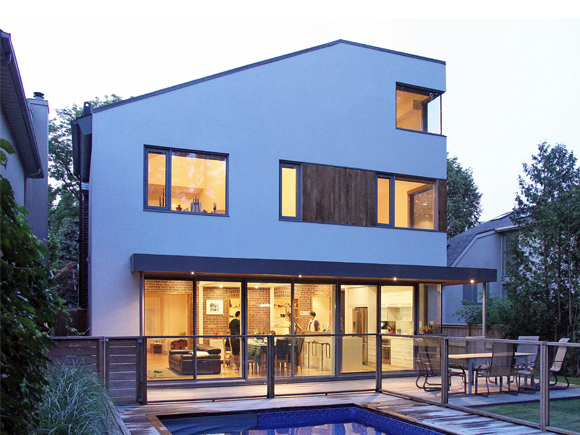COLDSTREAM HOUSE
Toronto, Canada
2010-2012
In summer 2010, we were commissioned by a research oriented client to design a new residence with an existing 1950’s brick dwelling for a family of five. The site is situated within Toronto’s Forest Hill neighbourhood surrounded by rich residential context. It includes a small addition to the front addressing entry and main addition at the back housing new living spaces and bedrooms.
Credits
Client: Private
Design Architect: Mehdi Marzyari, Maryam Alavi
Structural Engineer: Amir Hejazi
Services Engineer: Larry Petricone
General Contractor: Doug Merrick
Gross Floor Area: 260 SM (2800 SF)
Status: Built
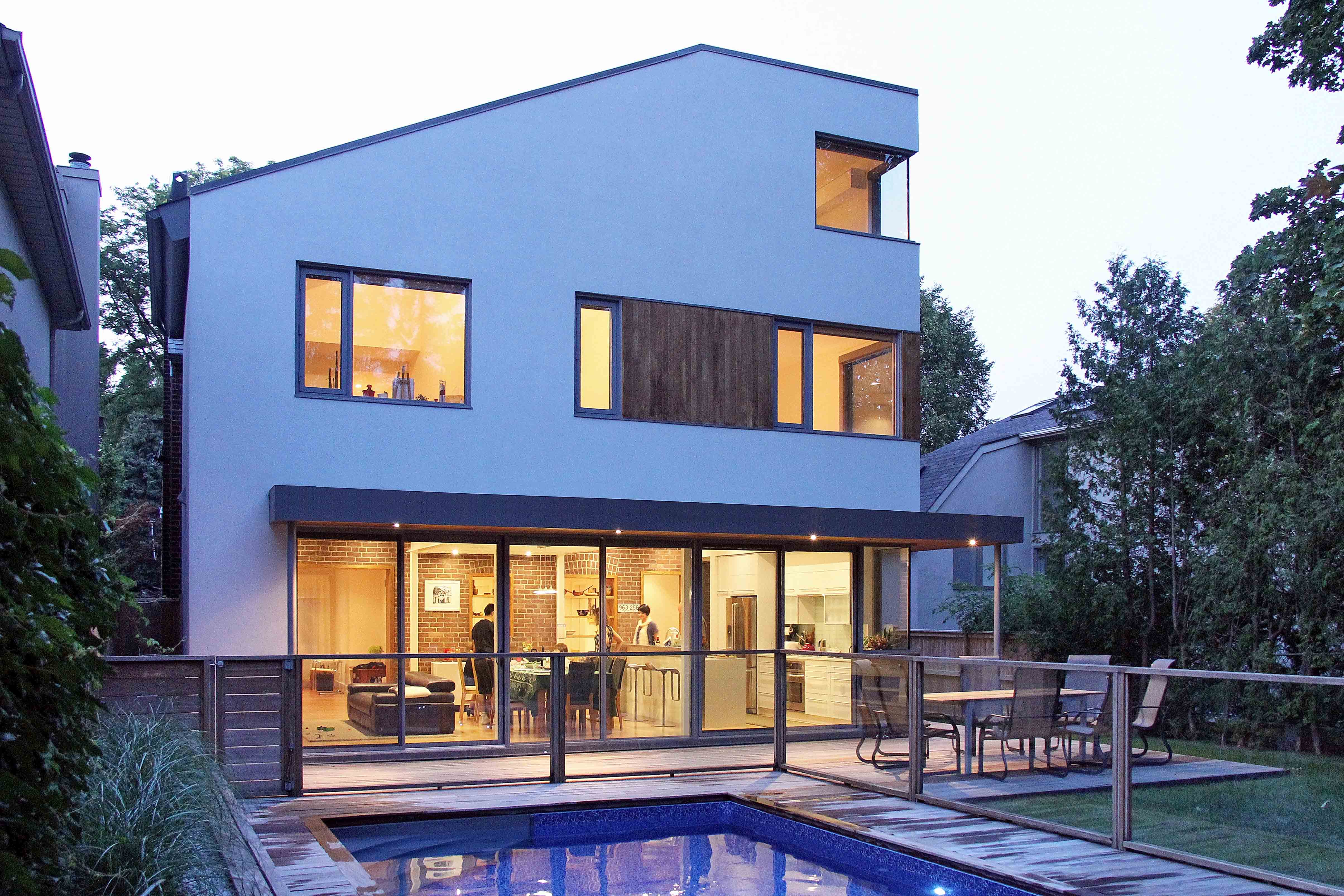
The main design approach is to create a modest and affordable house so as to respect the original building and surrounding neighbourhood as well as responding to the client's requirements and budget. In order to achieve that, the house is extended minimally at the front while the dramatic addition is designed at the back. Exterior of the existing structure is maintained with minimum alteration whereas the interior is entirely redesigned to serve the new program.
The new additions are designed with open concept and major glazing facing south to maximize natural daylighting in the existing house. The rear mass is oriented toward south east to capture picturesque green view with sloped roof accommodating an attic office with an access stair via master bedroom. White stucco and cedar cladding are chosen for the exterior finishes so as to create a modest and affordable addition.
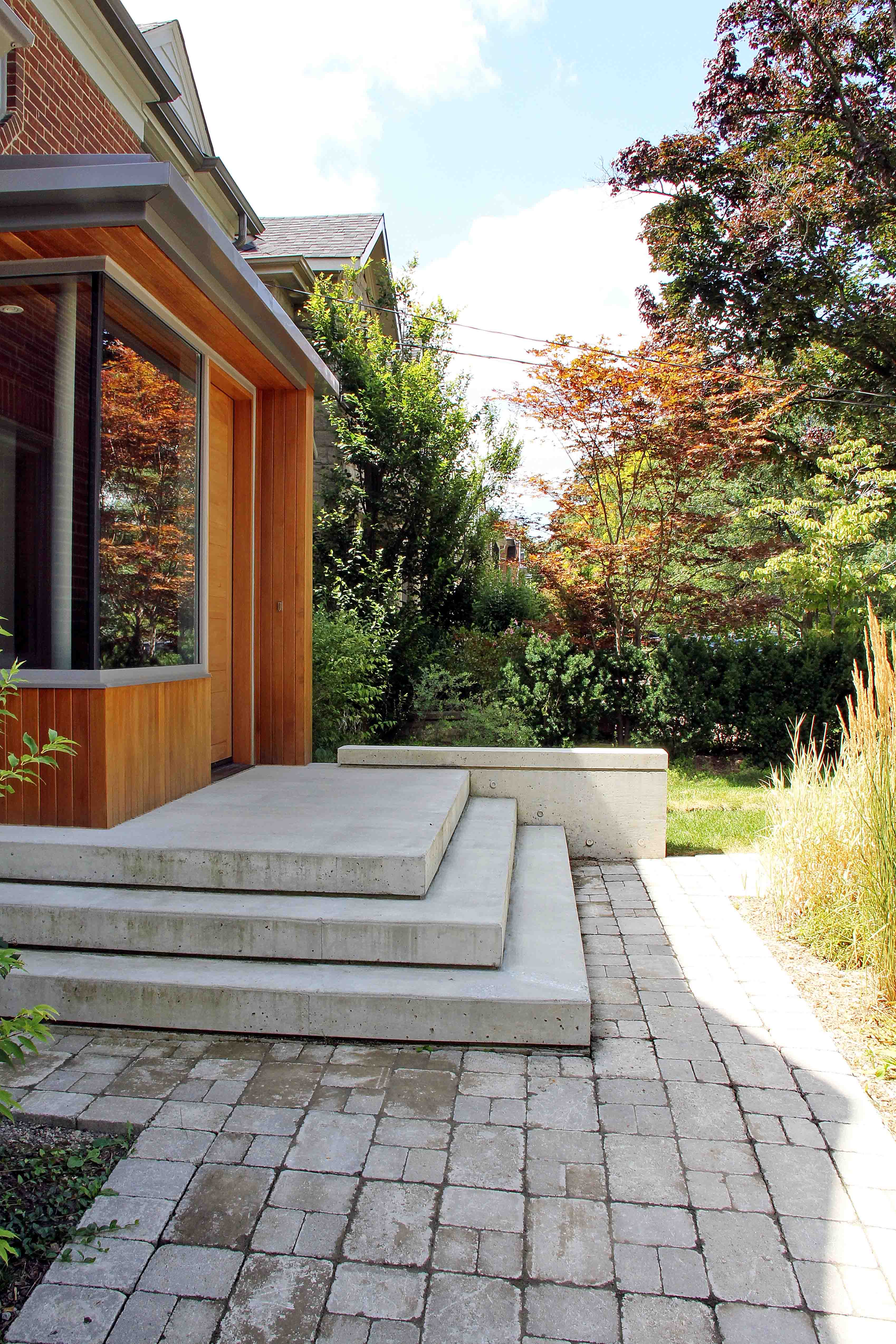
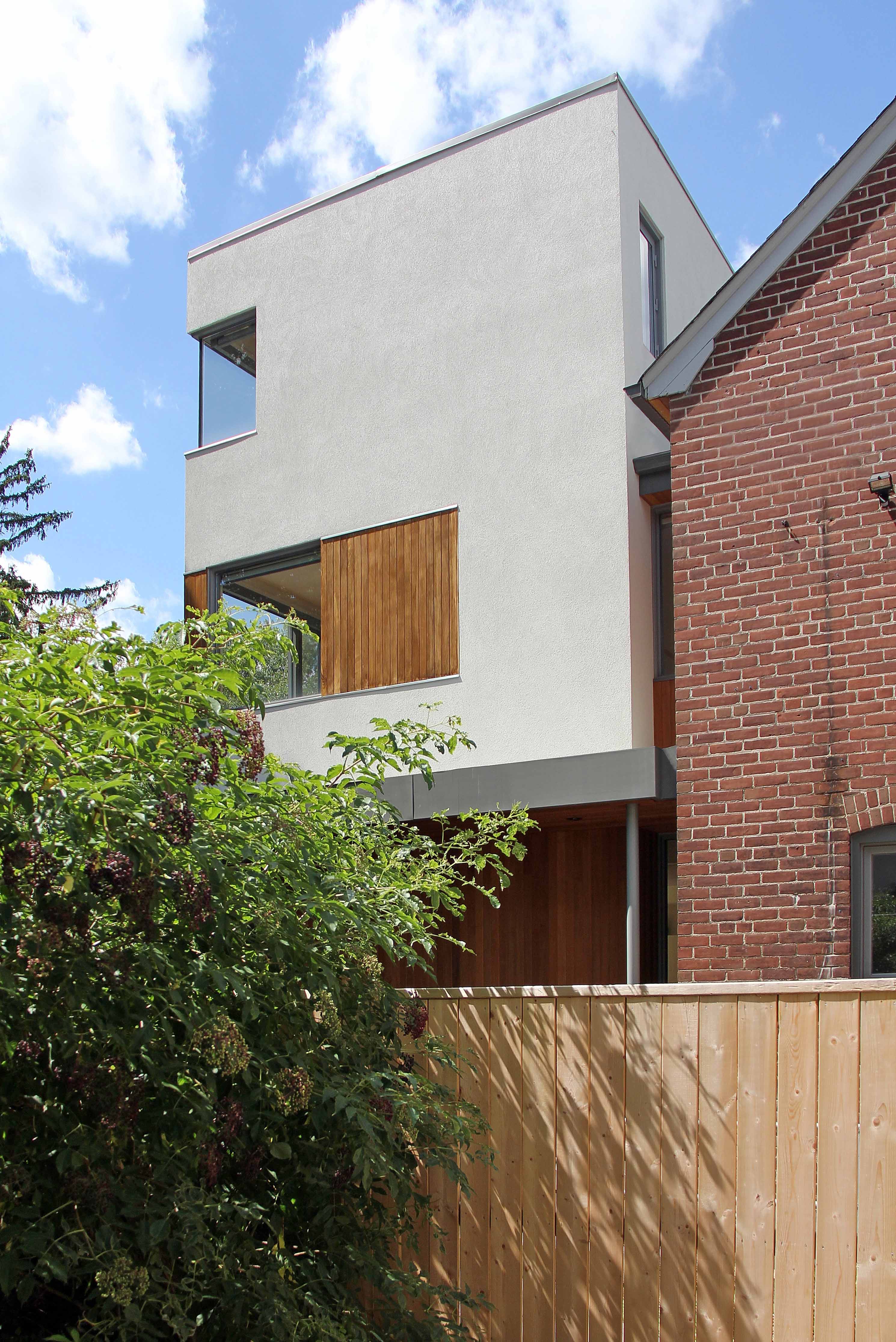
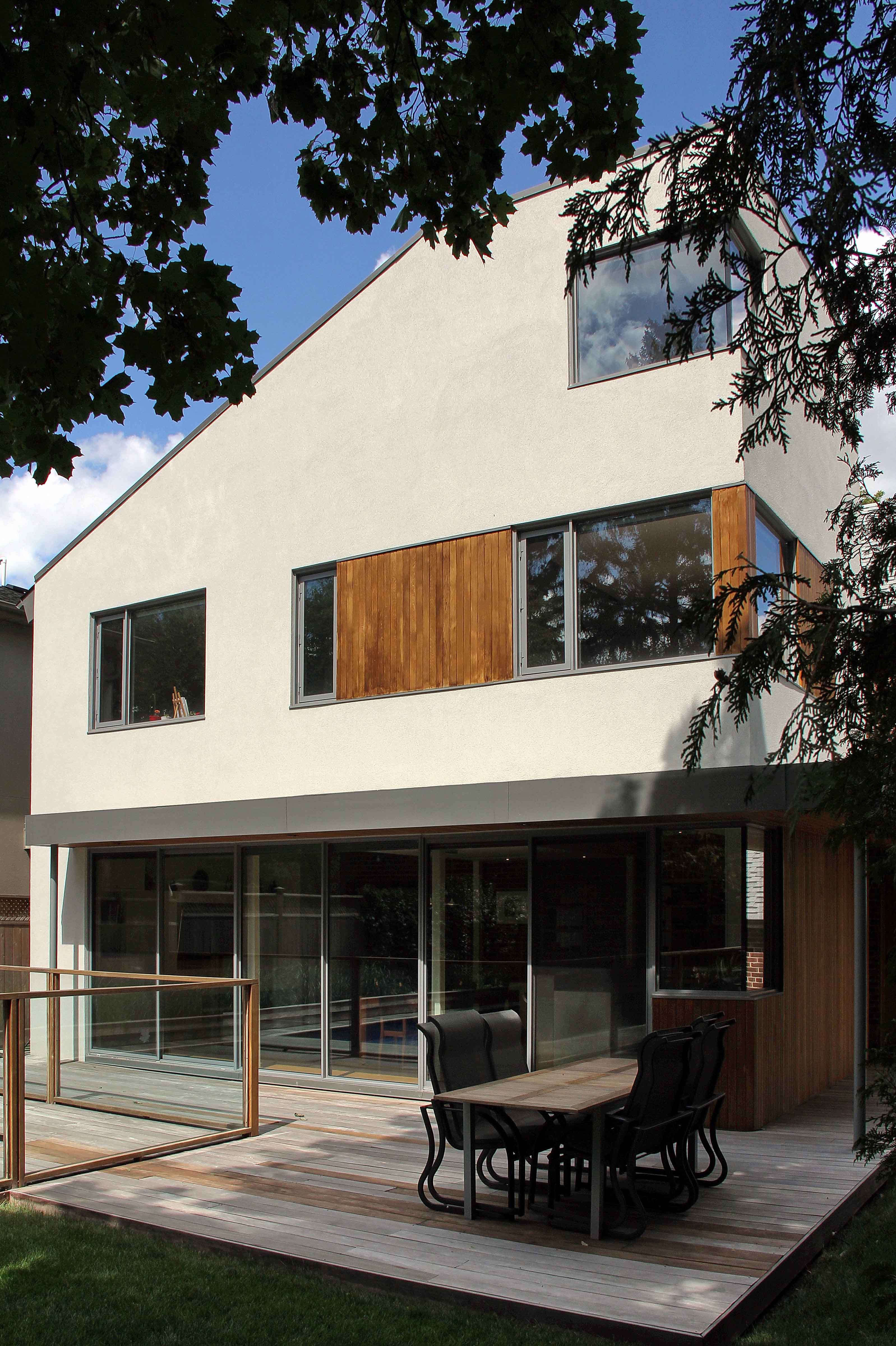
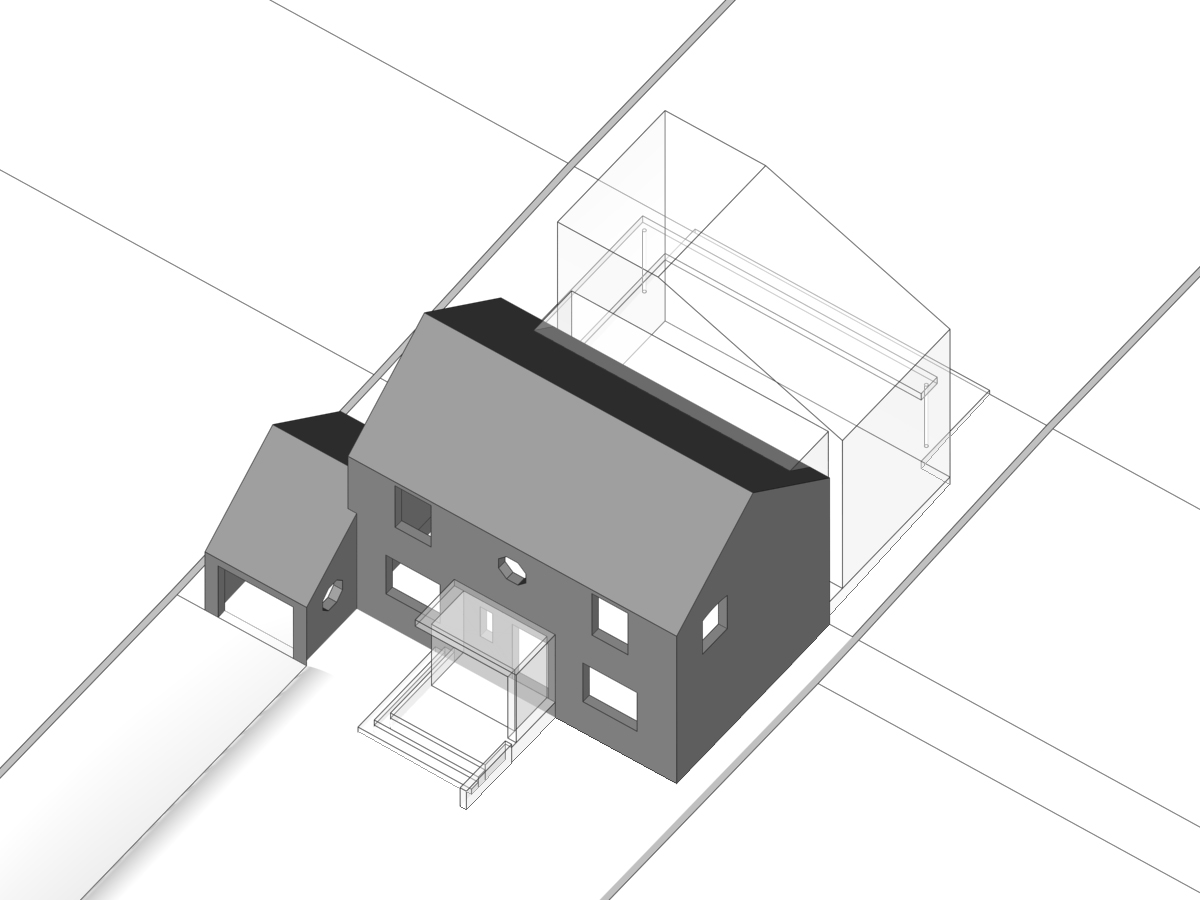
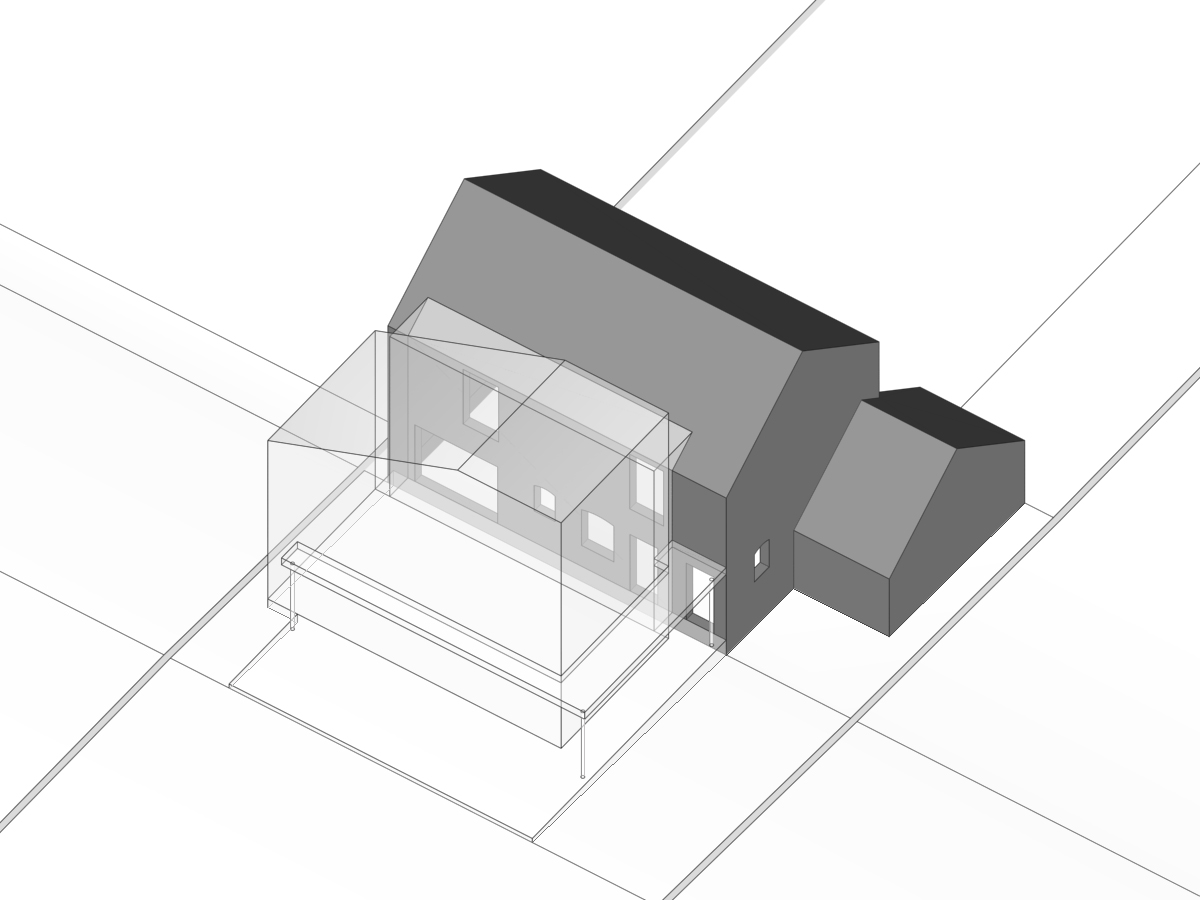
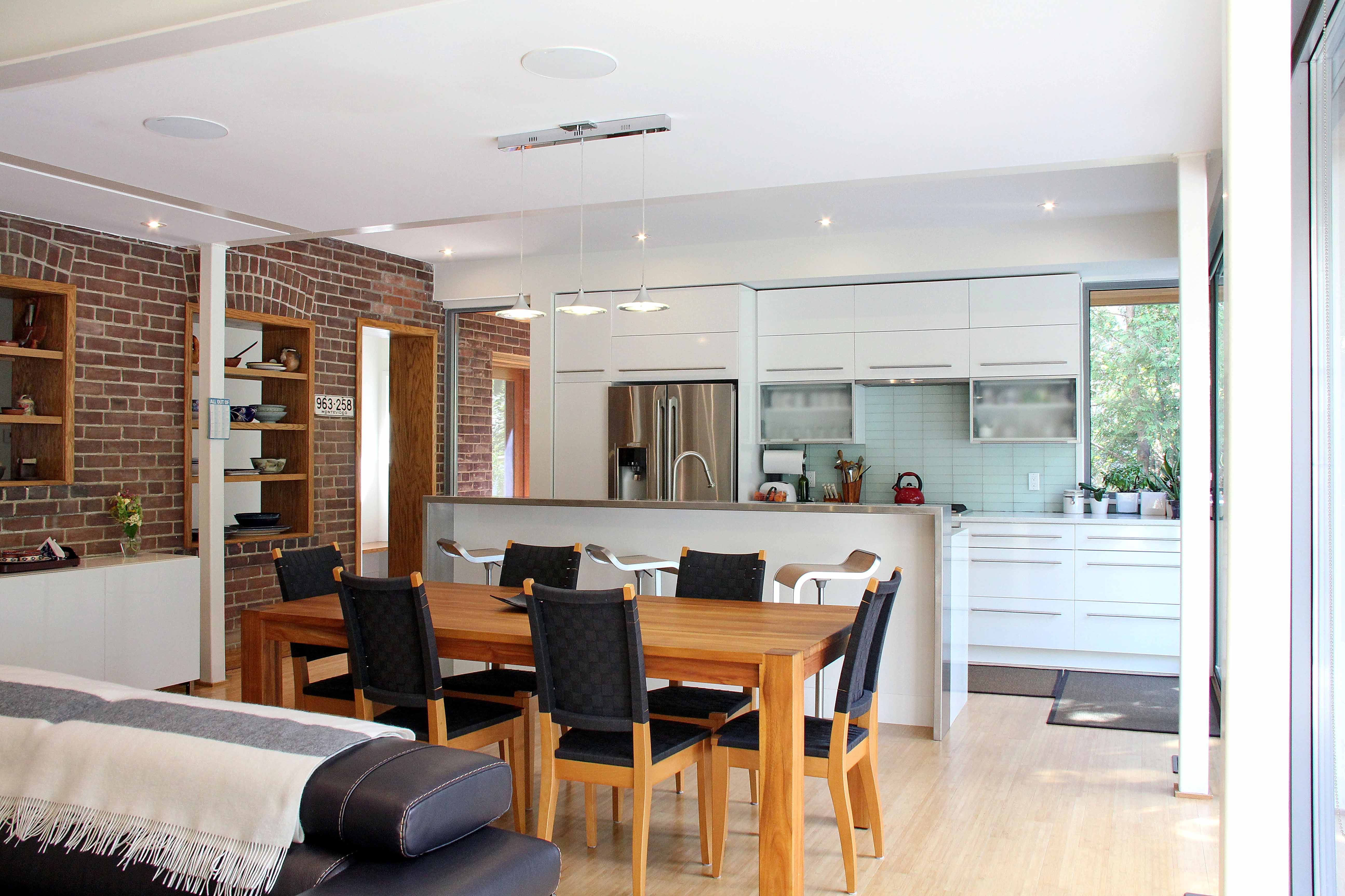
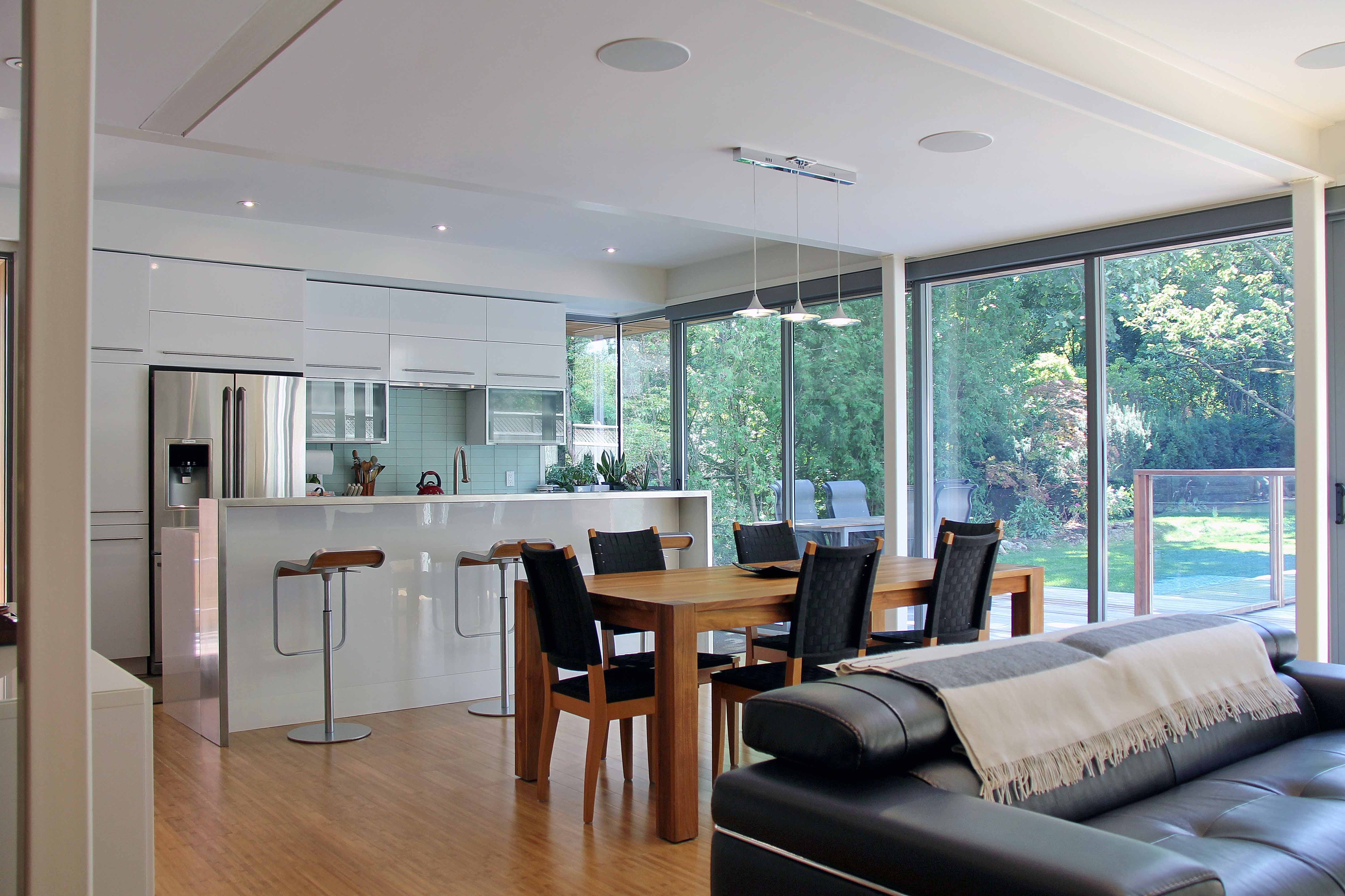
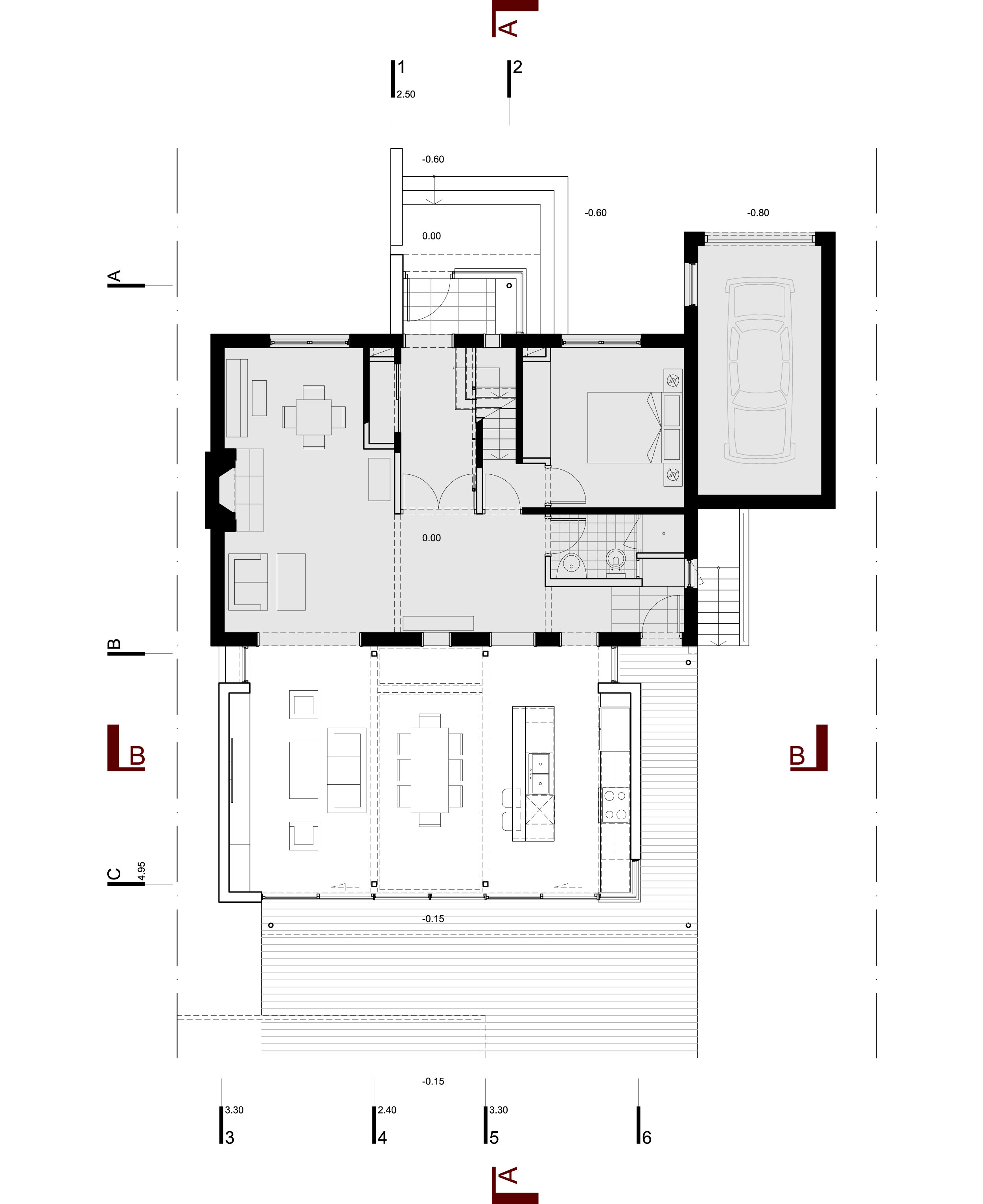
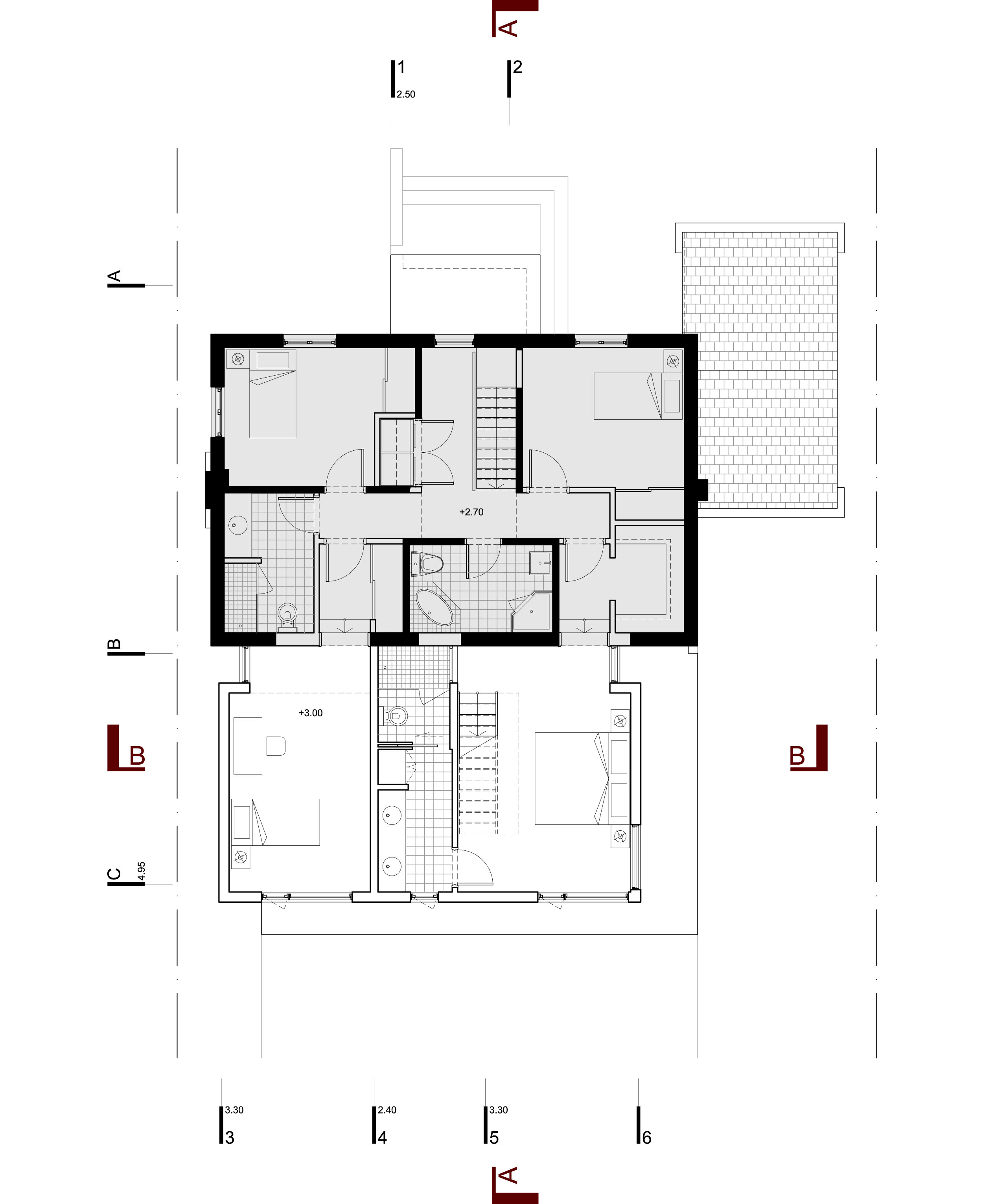
Incorporating sustainability principals was the main strategy during the design process in order to reduce environmental impact of the building in the entire lifecycle as well as well-being of its users. Geothermal heat pump and rough-in for future photovoltaic panels are considered to reduce fossil fuel consumption. The open plan of the interior and location of operable windows accommodate natural cross ventilation in most of the spaces and reduce mechanical load in summer time. To promote the comfort of the residents, each room features exterior view without compromising privacy. Major south face glazing maximizes natural daylighting as well as passive solar gain. Reuse of existing structure and brick reduce the demand for raw materials in addition to adding character to the building. In this regard, the existing exterior brick claddings are refurbished and reused as interior features for the new additions with original fenestrations corresponding new spatial configuration.
